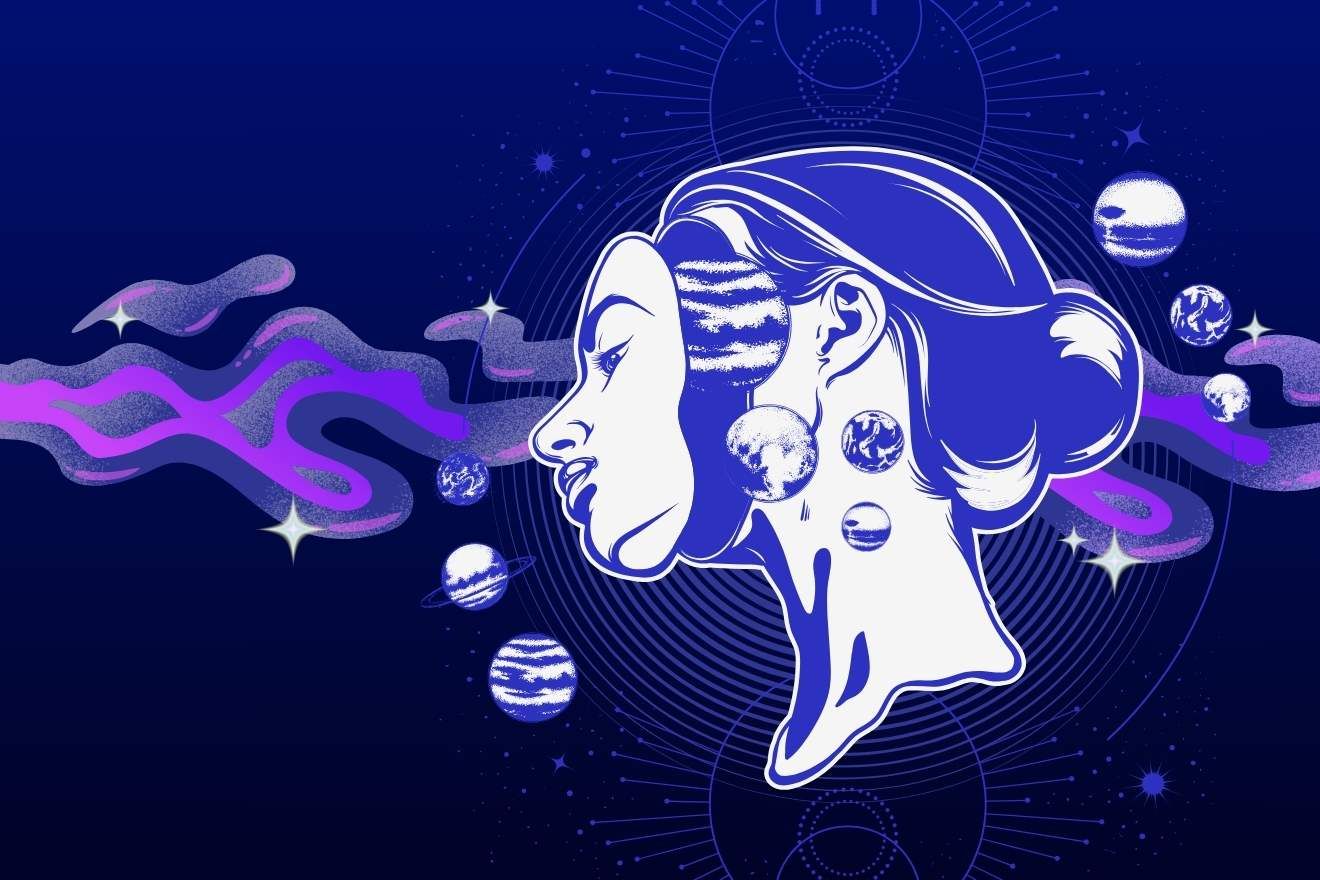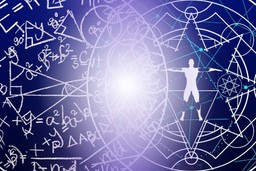Many people who have used psychedelics will know, from first-hand experience, that these substances can alter worldviews. More specifically, psychedelic users may undergo radical shifts in their metaphysical views – beliefs about the fundamental nature of reality – after one or more psychedelic experiences.
There is now research on the kinds of shifts in metaphysical views that can occur post-psychedelic use. In this article, we focus on how and why psychedelics can inspire belief in panpsychism and animism. But before doing so, we should clarify what these terms mean.
Defining Panpsychist and Animistic Worldviews
Exploring Panpsychism: Consciousness Across the Cosmos
Panpsychism is a position in metaphysics and the philosophy of mind. It views consciousness as a fundamental and ubiquitous feature of the universe. Everything possesses a mind-like quality. The term ‘panpsychism’ derives from two Greek words: pan (meaning ‘all’) and psyche (meaning ‘soul’ or ‘mind’).
It’s important to emphasize that panpsychists do not believe that everything has human-level consciousness. Atoms, for instance, are said to possess rudimentary consciousness, which is sometimes termed a proto-conscious or proto-experiential property. Panpsychists argue that the combination of these rudimentary forms of consciousness leads to more complex forms of conscious experience. There are also many variations of panpsychism; it is not a monolithic worldview. Cosmopsychism is one such version, which sees the universe in its entirety as one complex conscious entity. The Dutch philosopher Baruch Spinoza subscribed to such a view.
Unraveling Animism: A New Perspective on Natural Entities
Defining animism can be a bit trickier, due to the problematic history of how Western anthropologists used the term. In his book Primitive Culture (1871), the English anthropologist Edward Burnett Tylor defined animism as a primitive form of religion. According to Tylor, animists believe that spirits and souls reside in all natural things and phenomena (e.g. non-human animals, plants, rocks, rivers, weather systems, etc.). This definition is still in common use today. Many anthropologists have criticized this view, however, for imposing Western conceptions of ‘spirits’ onto indigenous cultures. Doing so regularly results in an attitude of condescension towards so-called superstitious, primitive cultures.
The religious studies scholar Graham Harvey coined the term ‘new animism’ to replace the Tylorian view, now dubbed ‘old animism’. New animism is a movement made up of scholars, anthropologists, and philosophers. These include Harvey, Nurit Bird-David, Eduardo Viveiros de Castro, and David Abram. They argue that animism can be more properly conceived as the perception of natural entities as more-than-human persons.
These other persons, like humans, also possess animacy, agency, and intelligence. This worldview is also connected to an ethic of reciprocity and respect that treats other natural entities as equal participants in a community. However, in his book Animism: Respecting the Living World (2005), Harvey also uses the term ‘animisms’ to reflect the plurality of animistic beliefs. After all, many indigenous cultures do believe in supernatural, disembodied beings that inhabit some or all natural things.
Panpsychism and animism are somewhat similar worldviews. However, unlike the animist, the panpsychist does not see features of the natural world as having human-like qualities. Furthermore, panpsychists may not subscribe to the supernatural beliefs of some animistic cultures.
Psychedelics Can Foster Panpsychist and Animistic Worldviews
A 2021 study published in Scientific Reports found that psychedelics can alter metaphysical beliefs. This results in shifts away from physicalist or materialist views (reality is fundamentally physical) and towards panpsychism [1]. However, the philosopher of mind and metaphysics Peter Sjöstedt-Hughes argues that the discussion of this result deserves some nuance. As he explains in his paper ‘On the need for metaphysics in psychedelic therapy and research’:
“[I]t was attested that psychedelics tend to shift people’s beliefs away from Physicalism (“hard materialism”) to Panpsychism. Though this may be suggestive of the truth, it should be treated with a little caution. Firstly because, as noted, Panpsychism is a meta-theory and so can be seen as a type of Physicalism, etc. Secondly, the thirteen-item Metaphysical Beliefs Questionnaire, developed for the study, defined Panpsychism in a way that could also be mistaken for Idealism. There are also certain omissions in the study, notably that of Neutral Monism, and its associated doctrines of Cosmopsychism or Pantheism (God is Nature)—metaphysical views considered by many as central to a peak psychedelic experience…. Though anecdotal, there are also documented cases of psychedelic experience bolstering the metaphysical belief in Physicalism” [2].
In any case, for many psychonauts, psychedelic experiences can lead to the adoption of the view that consciousness is a fundamental feature of the universe. Sjöstedt-Hughes has also drawn attention to “the animistic experiences that Amerindian cultures associate with their longstanding psychedelic use.” Indeed, several psychedelic-using indigenous cultures—such as peyote-using Native American tribes and ayahuasca-using Amazonian tribes—are deeply animistic in their worldviews.
Why Do Psychedelic Experiences Lead Some People to Panpsychism and Animism?
As Sjöstedt-Hughes points out, psychedelics can induce animistic experiences. In these altered states of consciousness, natural things (e.g. trees, plants, mountains, rivers, and rocks) can appear highly animate, agentive, communicative, and personified. This perception may then lead to the persisting belief that natural things possess these qualities.
In 2022, Sandeep Nayak and Roland Griffiths published a study in Frontiers in Psychology. They found that belief-changing psychedelic experiences—particularly those involving mystical-type effects—increase people’s tendency to attribute consciousness to living and non-living entities. These entities include non-human primates, quadrupeds, insects, fungi, plants, inanimate natural objects, and inanimate manmade objects [3]. This can help explain why many psychedelic users become attracted to both animistic and panpsychist worldviews following their psychedelic experiences.
Griffiths told PsyPost that the study “raises intriguing questions about possible innate or experiential mechanisms underlying such belief changes”. In a similar vein, Nayak noted, “It’s not clear why, whether that might be an innate drug effect, cultural factors or whether psychedelics might somehow expose innate cognitive biases that attribute features of the mind to the world.”
In several papers, the anthropologist Michael Winkelman has argued that psychedelics activate innate cognitive tendencies towards animism. For example, in a 2018 paper published in the Journal of Psychedelic Studies [4], he states, “Psychedelic entity experiences share central features with a robust innate human tendency to attribute agency, intentionality, causality, and personhood and to create accounts involving human-like qualities and entities.” He offers an evolutionary explanation for these animistic tendencies, which anthropologist Stewart Guthrie and psychologist Justin Barrett have also defended.
The Adaptive Nature of Anthropomorphism
From an evolutionary perspective, the tendency to attribute animacy, agency, intentions, and human-like characteristics to natural things can be viewed in terms of survival strategy. Human ancestors who generally attributed these qualities to natural things would be more likely to survive than ancestors who only selectively made such attributions. If we weigh up costs and benefits, in evolutionary terms, it is better to assume signals in the natural environment (e.g. the sound of a twig breaking) could be a potential predator or human enemy than not. The cost of this cognitive bias may be assuming agency where it does not exist, while the cost of lacking this bias could mean failing to assume the presence of a predator or human enemy where one is present. The latter mistake could potentially be life-threatening.
It is worth noting, however, that these evolutionary explanations of human belief in agents and spirits in natural things have been criticized [5]. Moreover, even if true, this evolutionary perspective does not mean that panpsychism and animism are nothing more than cognitive biases. That would be a reductionist point of view. The tendency to attribute consciousness and agency to living and non-living entities does not mean such entities lack those attributes. This bias—if it exists—also does not invalidate the phenomenology, meaning, value, and ethical sensibility associated with animistic experiences.
References
- Timmermann, C., Kettner, H., Letheby, C., Roseman, L., Rosas, F.E., and Carhart-Harris, R.L. (2021). Psychedelics alter metaphysical beliefs. Scientific Reports, Article: 22166.
- Sjöstedt-Hughes, P. (2023). On the need for metaphysics in psychedelic therapy and research. Frontiers in Psychology, 14, Article: 1128589.
- Nayak, S.M. and Griffiths, R.R. (2022). A Single Belief-Changing Psychedelic Experience Is Associated With Increased Attribution of Consciousness to Living and Non-living Entities. Frontiers in Psychology, 13, Article: 852248.
- Winkelman, M.J. (2018). An ontology of psychedelic entity experiences in evolutionary psychology and neurophenomenology. Journal of Psychedelic Studies, 2(1), 5–23.
- Lisdorf, A. (2007). “What’s HIDD’n in the HADD?”. Journal of Cognition and Culture, 7(3–4), 341–353.







